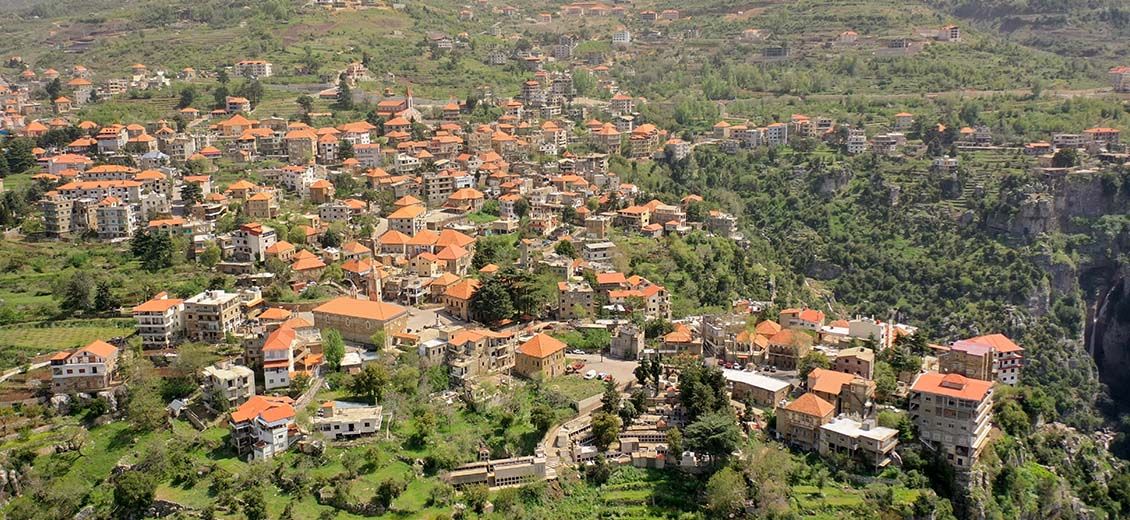
The self-governing Mount Lebanon is a chrysalis born from a silk cocoon. Without the silk, there would have been no governorate. It sustained its economy, culture, and demographics, laying the foundation for its political autonomy. Sericulture fueled a social revolution that distinguished the governorate from the other Ottoman provinces.
In the early 17th century, Prince Fakhreddin II, intent on consolidating the autonomy of his territory, needed to establish a stable economy. His goal was to foster trade with Europe through export-oriented production. To this end, he revived a long-standing Lebanese agro-industry from the 7th century: sericulture. He planted mulberry trees, built Cesareas stretching from Deir el-Qamar to Sidon, and ensured the necessary transport routes. Silk production bolstered the principality’s commercial ties with Tuscany and Modena.
The 19th century
The vision of prince Fakhreddin was not fully realized until the 19th century, when Lebanon became covered with mulberry forests and numerous silkworm farms, spurred by investments from Lyon and French imports. In 1841, the Portalis brothers (Prosper, Nicolas, Joseph, and Antoine Fortuné) established the first silk reeling factory for unwinding cocoons in Bteter, in the Aley district, at the heart of Mount Lebanon.
These silkworm farms are called kerkhéné in Lebanese. Why would this term of Hindu origin (karkhana), meaning factory, be readily adopted into the local dialect? Is it perhaps due to its similarity to the Syriac verb krakh (to wind), combined with the suffix -né? Therefore, kerkhéné could refer, in Syriac to the place where silk bales are wound.
From this point onward, the growth of sericulture was remarkable. Silk played a crucial role in the shaping and development of the autonomous governorate of Mount Lebanon (Mutasarifiya in Turkish). It contributed to its prosperity and, in turn, its political and cultural autonomy. In 1912, the French consul general in Beirut, Gaston Ducousso, reported the existence of 183 silkworm farms.
In 1900, France alone accounted for 90% of Mount Lebanon's silk, reaching 99% on the eve of World War I in 1914. Without silk, there would have been no governorate, as it sustained its economy, supported its demographics, and enriched the region’s social culture.
The social revolution
A multifaceted revolution unfolded, encompassing cultural, technical, social, and political dimensions. From that point on, Lebanon would further distinguish itself from the Ottoman regions. By 1860, 80% of its cultivated land was planted with mulberry trees. Lebanon produced and exported silk, while neighboring provinces such as Jabal Amel and Galilee continued to grow cotton, which they also exported to Europe.
The climate of the Lebanese mountains and the Francophile tendencies of its inhabitants attracted residents of Lyon, who in turn reinforced French culture. Teams of spinners came to train Lebanese workers, fostering daily cultural exchange. The faculty of medicine at Saint Joseph University in Beirut was founded in 1888 by the Lyon Jesuits. Silk left its mark on various fields, including medicine. In Lyon, surgeons secretly observed the embroiderers in silk factories, uncovering their secrets of ligatures and sutures, which would lead to advancements in the field of surgery.
In Lebanon, a social revolution had taken shape, particularly with the emancipation of women, who left their homes and farms to join the factories. There, they met instructors from Lyon and women from neighboring villages. The Lyon Chamber of Commerce promoted the transfer of technical expertise, and trade exchanges multiplied between Lebanon, the Var, the Alpes-Maritimes, and Corsica. Beirut’s port maintained ties with Marseille, forming an organic complementarity with Mount Lebanon. The city was more attuned to the rhythms of the autonomous governorate of Mount Lebanon than its own vilayet. At this point, the people of Mount Lebanon had their sights set on this city, integrating it into their vision of a national project.
The colors of Lebanon
Ships sailed for Marseille, loaded with thousands of bales of silk, returning with European goods, liturgical objects, interior furnishings, and even red roof tiles. Beyond the Lebanese mulberry forests, which contrasted with the Ottoman provinces growing Hauran wheat and Jabal Amel cotton, Lebanese villages were beginning to morph into symphonies of color. Homes, silkworm farms, and monasteries gradually became adorned with pyramidal roofs of red tiles.
This tile fundamentally altered the Lebanese landscape and architecture, transcending mere color. The lighter roofs allowed for the fitting of triple bay windows on the facades, and ceilings were decorated with paintings in the Tuscan or Provençal style. In addition, churches shed their massive stone vaults and soared upward. This new Latin-inspired architectural style was called Beghdédé, originating from the Syriac Bé-gdodo (braided), referring to the woven straw and reed nets covered in plaster that create the lightweight ceilings beneath the rafters.
This change in scale was accompanied by an elevation of the bell towers in the European style, while the interiors were adorned with Tridentine altars, sculptures, and statues that reflected Latin tastes. Monasteries and schools with large tiled roofs further enriched the landscape. Amid the rich greenery of pines, cypress trees, and mulberries, the villages displayed their vibrant red hues. During this silken era of governance, the entire aesthetic of the natural and built environment of Mount Lebanon was re-created and revived.





Comments